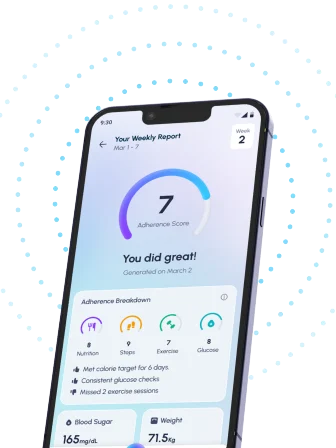Table of Contents
- Understanding Gender Differences in Diabetes Management
- How Gender Impacts Diabetes: Perceptions and Treatment
- Diabetes & Gender: A Comprehensive Guide to Health Disparities
- Men vs. Women: Unveiling Unique Diabetes Challenges
- Early Detection Matters: Recognizing Diabetes Risks by Gender
- Frequently Asked Questions
- References
Living with diabetes presents unique challenges, and understanding those challenges is key to effective management. But did you know that the experience of diabetes can differ significantly based on gender? This blog post delves into Gender Differences in Diabetes: Understanding Health Perceptions, exploring how men and women perceive their condition, manage their symptoms, and interact with the healthcare system. We’ll examine the often-overlooked nuances in diagnosis, treatment, and long-term health outcomes, ultimately aiming to empower you with knowledge to better navigate your own diabetes journey, regardless of your gender. Let’s uncover the crucial insights that can improve your health and well-being.
Understanding Gender Differences in Diabetes Management
Globally, diabetes affects millions, but its impact isn’t uniform across genders. While the overall prevalence is significant, data from the World Health Organization reveals that diabetes affects males at a slightly higher rate (8.9%) than females (7.8%). Learn more about global diabetes prevalence. However, understanding these differences extends beyond simple statistics; it delves into the nuances of how diabetes manifests, is diagnosed, and is managed across genders in diverse regions like India and other tropical countries.
Sociocultural Factors and Healthcare Access
In many Indian and tropical countries, sociocultural factors significantly influence diabetes management. Traditional gender roles often place women in positions with less autonomy in healthcare decisions. This can lead to delayed diagnosis and less proactive management. Furthermore, access to quality healthcare and resources may be unevenly distributed, disproportionately affecting women in rural areas or lower socioeconomic groups. These disparities emphasize the need for targeted interventions to improve healthcare access and empower women to actively participate in their diabetes care.
Unique Biological Factors
Beyond sociocultural influences, biological differences also contribute to the disparity. Hormonal changes during menstruation, pregnancy, and menopause affect glucose metabolism in women, potentially impacting diabetes risk and management. These hormonal fluctuations necessitate a more personalized approach to diabetes management in women. Early detection and ongoing monitoring are crucial. The impact of these hormonal shifts can be significant, and understanding them is key to effective management. For more information on the long-term effects, you might find our article on Managing Diabetes as You Age: Challenges and Solutions helpful.
Actionable Steps for Improved Management
For better diabetes management in Indian and tropical countries, we need culturally sensitive programs. These should focus on improved healthcare access for women, increased awareness campaigns tailored to gender-specific needs, and community-based support groups. Early screening, regular check-ups, and empowering women to actively participate in their treatment are vital steps toward improving outcomes. Ultimately, addressing these gender differences is crucial for effectively combating the burden of diabetes in these regions. It’s also important to consider the impact of diabetes on fertility; for insights into this area, please see our article on How Does Diabetes Affect Fertility? Insights and Tips.
How Gender Impacts Diabetes: Perceptions and Treatment
Diabetes disproportionately affects a large segment of the population, with 61% of those diagnosed falling within the 20-64 age bracket, according to the International Diabetes Federation. Understanding how this prevalent disease manifests differently in men and women, particularly within Indian and tropical countries, is crucial for effective management and improved health outcomes. This includes recognizing the unique social, cultural, and economic factors that influence diabetes perceptions and access to care.
Sociocultural Influences on Diabetes Management
Women in many Indian and tropical countries often prioritize the needs of their families over their own health. This can lead to delayed diagnosis and inadequate management of diabetes, potentially resulting in more severe complications. Furthermore, cultural beliefs and traditional practices may influence treatment adherence and seeking medical help. Men, on the other hand, might face different barriers, such as societal expectations related to masculinity and stoicism that prevent them from openly discussing health concerns or seeking support.
Access to Healthcare and Resources
Access to quality healthcare and diabetes resources varies significantly across regions. In many parts of India and tropical countries, geographical limitations, financial constraints, and a lack of awareness contribute to disparities in diabetes care. This inequality often affects women more profoundly due to limited mobility, reduced access to information, and systemic biases within healthcare systems. Understanding these disparities is essential for designing targeted interventions to improve access to diagnosis, treatment, and education. The impact of these disparities can significantly affect mental well-being, as highlighted in The Impact of Diabetes on Mental Health.
Tailoring Treatment Strategies
Effective diabetes management requires a personalized approach that considers individual needs and circumstances. This includes recognizing the gender-specific biological factors influencing disease progression and tailoring treatment plans accordingly. For instance, hormonal changes in women throughout their lifespan can affect blood glucose control and require specific management strategies. Promoting gender-sensitive approaches in diabetes education and healthcare is key to achieving better health outcomes in these regions. Early detection, regular check-ups, and culturally appropriate education programs are vital steps towards mitigating the impact of diabetes. It’s also crucial to consider the strong link between diabetes and obesity, as detailed in Understanding the Link Between Diabetes and Obesity, as weight management plays a significant role in effective diabetes management.
Diabetes & Gender: A Comprehensive Guide to Health Disparities
Women in India and other tropical countries face unique challenges related to diabetes, often experiencing disparities in diagnosis, treatment, and outcomes compared to men. Understanding these differences is crucial for improving healthcare access and patient care. A key disparity highlighted by research is the significantly increased risk of cardiovascular disease. Studies show women with diabetes have a 40% higher risk of heart disease compared to men with diabetes. This emphasizes the need for proactive screening and management strategies tailored to the specific needs of women.
Sociocultural Factors and Access to Care
Cultural norms and limited access to healthcare facilities can further exacerbate these health disparities. In many Indian and tropical communities, women may prioritize the health needs of their families over their own, delaying diagnosis and treatment. Additionally, awareness about diabetes and its complications may be lower among women, leading to delayed or inadequate management. Early detection and consistent management are paramount for mitigating these risks. It’s also important to consider whether diabetes might be considered a disability; you can learn more about the implications in our article, Is Diabetes Considered a Disability? Understanding the Implications – Tap Health.
Tailored Approaches to Diabetes Management
Effective strategies for managing diabetes in women within these regions should consider these unique challenges. Increased awareness campaigns targeting women, focusing on early detection and the importance of regular check-ups, are vital. Furthermore, healthcare providers must be trained to address the specific concerns and needs of female patients with diabetes, considering hormonal influences and reproductive health. Access to affordable and culturally sensitive healthcare is crucial for bridging the gap in diabetes care. Before we delve deeper, it’s crucial to dispel some common myths. For instance, Can Diabetes Be Transmitted? Understanding the Facts and Myths addresses this question.
Taking Action: A Call to Improved Healthcare
Improving diabetes outcomes for women in India and tropical countries requires a multi-pronged approach. This includes increased investment in accessible healthcare, targeted awareness campaigns, and culturally sensitive education programs. By addressing the unique challenges faced by women, we can work towards a future where everyone has equal access to quality diabetes care and improved health outcomes.
Men vs. Women: Unveiling Unique Diabetes Challenges
Diabetes affects men and women differently, impacting their health perceptions and management strategies, particularly within the context of Indian and tropical countries. While the global prevalence of diabetes is a significant concern, studies reveal higher rates in urban areas (12.1%) compared to rural areas (8.3%) as highlighted in the International Diabetes Federation’s Diabetes Atlas. This disparity is even more pronounced in regions with high population densities and varying access to healthcare.
Unique Challenges Faced by Women
Women with diabetes often experience unique challenges, including hormonal fluctuations related to menstruation, pregnancy, and menopause, all of which can significantly impact blood sugar control. Furthermore, societal norms and expectations in many Indian and tropical countries may lead to delayed diagnosis and inadequate management, impacting long-term health outcomes. Early detection and proactive management are crucial. Regular check-ups and open communication with healthcare providers are essential for women’s diabetic health.
Men and Diabetes: Specific Considerations
Men, too, face specific challenges. Often, traditional masculinity norms can prevent men from openly discussing health concerns or seeking timely medical attention. This, coupled with potentially higher rates of smoking and unhealthy lifestyle choices in some regions, contributes to a higher risk of developing complications. Addressing these societal barriers is key to improving diabetes management in men. Promoting health awareness campaigns tailored to men’s specific needs is vital for positive change. For example, understanding the link between diabetes and conditions like erectile dysfunction, as discussed in Can Diabetes Cause Erectile Dysfunction? – Tap Health, is crucial for men’s health education.
Addressing the Regional Disparity
The higher prevalence of diabetes in urban areas of Indian and tropical countries necessitates targeted interventions. Improved access to affordable healthcare, increased awareness through public health campaigns in local languages, and culturally sensitive education programs are crucial steps towards better diabetes management and improved health outcomes for both men and women. Take control of your health today. Schedule a consultation with your doctor to discuss diabetes risk and management strategies. It’s also important to dispel common myths, such as the misconception that diabetes is sexually transmitted. Learn more in Can Diabetes Be Transmitted Sexually? Myths vs. Facts Explained – Tap Health.
Early Detection Matters: Recognizing Diabetes Risks by Gender
Understanding Gendered Risks in Diabetes
Diabetes, a significant health concern globally, impacts men and women differently. Early detection is crucial, especially in Indian and tropical countries where lifestyle changes and genetic predispositions can heighten the risk. Research highlights a stark reality: children born to mothers with gestational diabetes are 7 times more likely to develop Type 2 diabetes later in life. This underscores the importance of prenatal care and managing gestational diabetes effectively to reduce intergenerational risks.
Specific Risks for Women
Women face unique challenges. Polycystic ovary syndrome (PCOS), common in many tropical regions, significantly increases the risk of developing Type 2 diabetes. Hormonal fluctuations throughout a woman’s life, particularly during pregnancy and menopause, also play a crucial role. Understanding these hormonal influences is vital for targeted preventative measures and early diagnosis. Regular health check-ups, including blood sugar monitoring, are essential for women, especially those with a family history of diabetes or risk factors like PCOS.
Men and Diabetes: A Different Perspective
While women face specific hormonal challenges, men are also susceptible to different diabetes-related risks. Often, men may display symptoms less readily, leading to delayed diagnosis. Abdominal obesity, a common problem in many regions, increases the risk of Type 2 diabetes in men. Promoting healthy lifestyle choices, including regular exercise and a balanced diet, is key for men in preventing or managing the disease. For more information on managing diabetes effectively, see How Diabetes Education Enhances Health Outcomes – Tap Health.
Taking Action in Indian and Tropical Countries
In Indian and tropical countries, access to healthcare and awareness surrounding diabetes can vary significantly. Regular screenings and adopting healthier lifestyles are crucial for mitigating the risk of diabetes for both men and women. The impact of diabetes can be significant, particularly in younger populations. To learn more about this, read Diabetes in Teenagers: Understanding the Impact – Tap Health. Seek advice from your healthcare provider to assess your individual risk and implement preventative measures tailored to your gender and lifestyle. Early detection and proactive management can significantly improve health outcomes and reduce the long-term complications associated with diabetes.
Frequently Asked Questions on Gender Differences in Diabetes
Q1. How does diabetes affect men and women differently in India and other tropical countries?
Diabetes prevalence and management vary between genders in India and other tropical countries. Sociocultural factors, like limited healthcare access and women prioritizing family over their health, contribute to disparities. Biological differences, such as hormonal changes in women, also play a role. Men may face different challenges related to lifestyle factors.
Q2. What sociocultural factors contribute to gender disparities in diabetes management in these regions?
Limited access to healthcare, coupled with women often placing family needs above their own health, creates significant barriers to effective diabetes management for women. Cultural norms and beliefs can also influence help-seeking behaviors and treatment adherence.
Q3. What are the key biological factors influencing diabetes risk and management in women?
Hormonal changes throughout a woman’s life, including those related to menstruation, pregnancy, and menopause, significantly impact diabetes risk and management. Conditions like PCOS (Polycystic Ovary Syndrome) can also increase the risk.
Q4. What strategies are crucial for effective diabetes management, considering gender differences?
Culturally sensitive programs are essential, focusing on improved healthcare access for women, targeted awareness campaigns addressing gender-specific needs, and community-based support groups. Early detection, regular check-ups, and personalized treatment plans are vital for both genders.
Q5. What role do lifestyle choices and early detection play in managing diabetes for both men and women?
Lifestyle choices, such as diet and exercise, are crucial for both men and women. Early detection through regular check-ups is critical for effective management. Personalized treatment plans should consider individual factors like PCOS in women and lifestyle choices in men.
References
- Disparate Model Performance and Stability in Machine Learning Clinical Support for Diabetes and Heart Diseases: https://arxiv.org/pdf/2412.19495
- Diabetes in Older Adults: A Consensus Report: https://en.iacld.com/UpFiles/Documents/292529019.pdf




